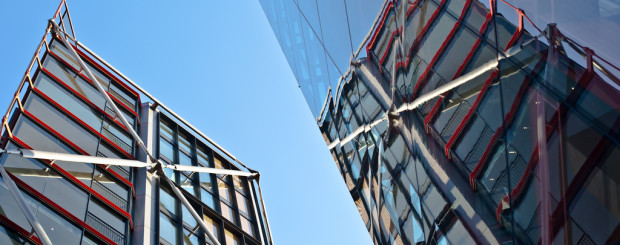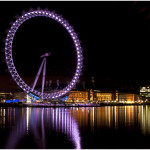How to Find Flats to Let in London
The property scene is constantly changing in London, with new developments springing up all the time and developers renovating and modernising flats and apartments to attract tenants. The term ‘flat’ and ‘apartment’ are often used interchangeably in London, although apartments tend, on the whole, to have a higher spec.
Searching for a Flat or Apartment Online
Unless you are staying in London and have the time and inclination to trawl through classified advertisements and visit estate agents, the easiest way to find a flat or apartment in London is to use one of the many dedicated property finder sites (RightMove, Zoopla, Prime Location, etc.) and/or the classified sites that have a decent property portfolio (e.g. Gumtree and Loot).
All of the main property sites include the function to filter results based on criteria such as location, radius, number of beds and price. Draw a Search is a useful tool that the best employ, enabling you to literally draw a box around the area of interest on an interactive map of London. You can also register for email alerts with many of these sites.
If you are looking specifically to share a flat – a great way to save money – then Flatshare.com is another valuable resource.
Types of Flat/Apartment
As already mentioned, the terms flat and apartment are roughly interchangeable, but there are some broadly specific criteria for certain types:
All things being equal, the most economical option is a bedsit, closely followed by a studio apartment. Bedsits comprise a single room for sleeping, relaxing and eating plus a shared bathroom, whereas a studio is self-contained with a separate kitchen area and bathroom.
A standard flat or apartment will have one or more separate bedrooms and will often form part of a complex or block, some of which extend upwards for several storeys.
At the higher end of the market are the serviced or managed apartments, some of which are attached to a hotel. Residents in these properties often have free or discounted access to the hotel’s facilities and will have an on-site reception. Serviced apartments may also include a concierge service and porters for assistance with luggage.
How much do Flats cost?
The price of renting a flat varies considerably depending on the area in which it is located. You may be able to find a flat for around £120 per month, but finding anything decent below the £200 a month mark will take plenty of patience and determination.
As for the exclusive areas around Mayfair, Kensington and Knightsbridge, anything below £300 a month is a bargain, with £400 a month the minimum you can expect to pay (with no upper limit when you consider some of the luxury penthouses available to the rich and famous).
The best chance of snapping up a bargain is finding someone who wants an immediate tenant or who has specific requirements (e.g. short-stay only) that you can fulfil.
Things to Consider
To avoid unnecessary upheavals, it is best to do your research thoroughly before signing a tenancy agreement. You don’t want to be moving every six months because your flat turned out to be too dingy, too far from work or next door to a loud pub. Some of the things you will want to consider are:
Commutable Distance
This is usually one of the most important considerations when hiring a room. How long will it take you to get to your place of work or study? The Transport for London website has all the relevant timetables to help you to work out the implications of commuting from various areas of London. As a rough idea, each tube station between your home and your work adds three minutes to your journey time.
Lighting/Space
How much natural light will your property get? London experiences short periods of daylight in the winter months and you may find some flats becoming dingy. Do you need plenty of space and privacy or would you consider saving money by taking a bedsit?
Parking/Outdoor Space
Some flats have private off-street parking which can save money on your car insurance. Is it important for you to have a garden to enjoy or would you be satisfied with a balcony?
Style
Do you have a preference for modern designs or are you happy with a flat that was decorated in the 1970s or earlier? Developers have created some state-of-the-art modern apartments in London if you can afford the monthly rent.
Noise & Surroundings
Are you happy to live along a busy main road or will you prefer to retreat to one of the leafy, green suburbs after a hard day’s work? Consider the proximity of things like pubs, clubs, schools, industrial sites and rubbish tips and decide whether you can put up with the potential noise disruption.
Security & Safety
Do you share an entrance with other people? Some tower blocks have shared entrances and stairwells which can be intimidating in certain areas of London. You might also want to think about how far your accommodation is from the nearest tube, train and bus stations and how well lit the area is particularly if you anticipate travelling home late in the evening.
Sealing the Deal
It should go without saying that you should view your shortlist of properties before signing a tenancy agreement. If possible, visit it at different times of the day to help you assess things like lighting, noise levels and the kinds of neighbours you will be living near.
Before signing you also need to be clear about what is included in the rent. Will you be responsible for paying the Council Tax, utility bills, TV License and Internet or will these be included?
You will almost certainly need to pay a security deposit as well as your first month’s rent. This will be returned at the end of your tenancy but you may lose all or part of it if you cause damage to the property (excluding general wear and tear). It is a legal requirement for your landlord or landlady to place this deposit in a government scheme.
Your landlord or landlady must also show you a valid Gas Safe certificate.








